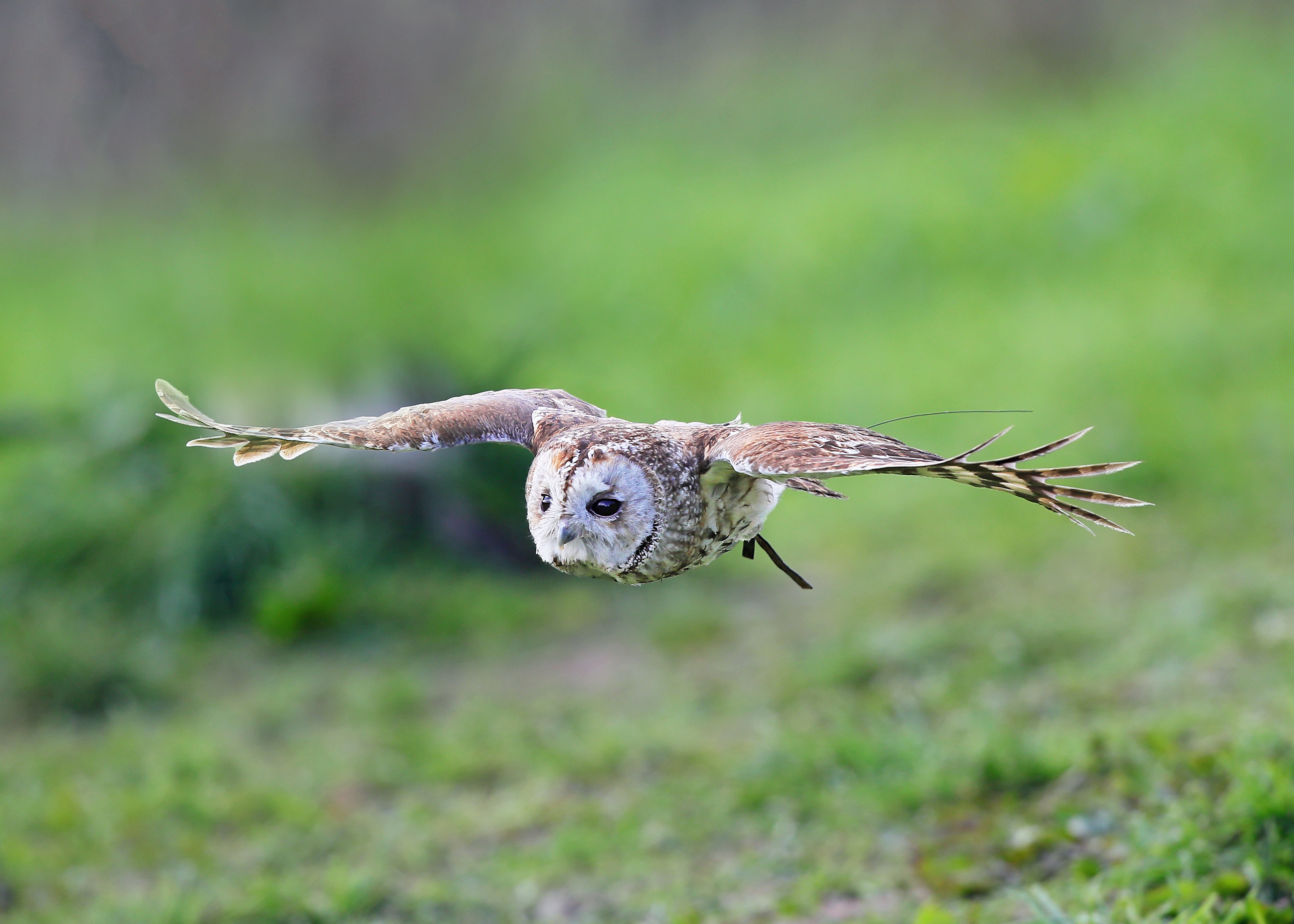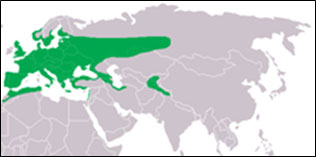
Tawny Owl
"Fforest"
Troy joined the Pembrokeshire Falconry team in 2015 from Folly Farm before coming to live here at the centre. He is a cheeky member of the team and can always be heard calling for food in the morning when the falconers arrive!
Click below to Sponsor "Fforest"
TAWNY OWL FACTS
Strix aluco
TERRITORY/LOCATION
The tawny owl has a distribution stretching discontinuously across temperate Eurasia from Great Britain and the Iberian Peninsula eastwards to western Siberia, and India. The tawny owl has a geographical range of at least 10 million km2 (3.8 million mi2) and a large population including an estimated 970,000–2,000,000 individuals in Europe alone.
HABITAT
Found in deciduous and mixed forests, and sometimes mature conifer plantations, preferring locations with access to water. Cemeteries, gardens and parks have allowed it to spread into urban areas.
CONSERVATION STATUS
Least Concern

DIET
They hunt mainly rodents usually by dropping from a perch to seize its prey, which it swallows whole; in more urban areas its diet includes a higher proportion of birds, also insects and small reptiles.
SIZE/WEIGHT
The tawny owl is a robust and stocky bird, small to medium size and, 37–46 cm long, 81–105 cm wingspan, Weight 385 to 800 g. the female is much larger than the male, 5% longer and more than 25% heavier.
NESTING
The tawny owl typically nests in a hole in a tree, but will also use old magpie nests, squirrel drey or holes in buildings, and readily takes to nest boxes. It nests from February onwards in the south of its range laying 2-3 eggs incubating 30 days.
LIFE EXPECTANCY
4 - 6 years old average age,
18 years oldest recorded in the wild and over 27 years for a captive bird
SCIENTIFIC
CLASSIFICATION
KINGDOM
Animalia
PHYLUM
Chordata
CLASS
Aves
ORDER
Strigiformes
FAMILY
Strigidae
GENUS
Strix
SPECIES
S. aluco
DID YOU KNOW?
The parents care for young birds for two or three months after they fledge, but from August to November the juveniles disperse to find a territory of their own to occupy. If they fail to find a vacant territory, they usually starve. The juvenile survival rate is unknown, but the annual survival rate for adults is 76.8%.
